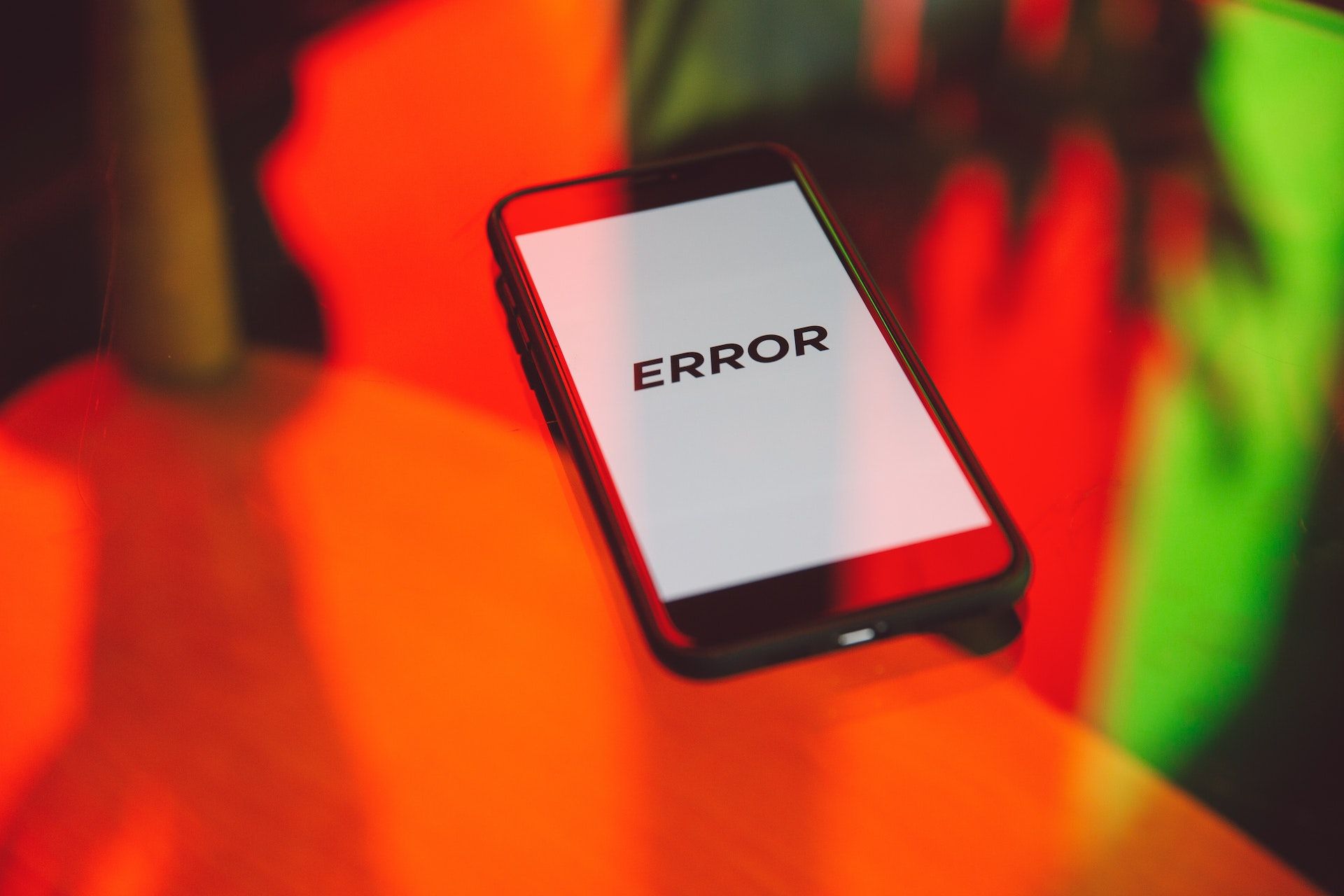PDP 認証の失敗: それは何であり、どのように修正すればよいですか?
基本的なトラブルシューティング手順
あなたがここにいるなら、おそらく通知を見たでしょうPDP認証失敗デバイスでこのエラーが発生します。このエラーが何を意味するのかよくわからない場合は、恐ろしく感じるかもしれませんが、心配しないでください。大きな問題ではありません。PDP 認証とは何か、モバイル ネットワークでの役割、およびトラブルシューティングの方法を見てみましょう。

PDP 認証とは何ですか?
PDP認証の略称パケットデータプロトコル認証は、モバイル ネットワークがデータ サービスにアクセスしようとするデバイスを検証および認証するために使用するメカニズムです。これにより、正当なデバイスのみがネットワークに接続してデータ リソースを使用できるようになります。
PDP 認証の本質は、モバイル デバイスとネットワークの認証サーバーの間で認証パケットを交換することです。これらのパケットには、デバイスの資格情報を検証し、ネットワークのセキュリティ ポリシーに準拠していることを保証し、データ使用権限を検証する暗号化された情報が含まれています。PDP 認証が成功しないと、デバイスは安定したデータ接続を確立できません。
PDP 認証プロセス中、モバイル デバイスはネットワークの認証サーバーに要求を送信し、データ接続を確立する意図を示します。認証サーバーは、ランダムな値または暗号化 nonce を含むチャレンジ パケットをデバイスに送信して応答します。
次に、モバイル デバイスは SIM カードやユーザー名とパスワードなどの認証資格情報を使用して、チャレンジ パケットに対する応答を生成します。この応答は暗号化され、検証のために認証サーバーに送り返されます。
認証サーバーは、受信した応答をデバイスの資格情報に基づく期待値と比較します。値が一致する場合、デバイスは認証済みとみなされ、ネットワークはデータ サービスへのアクセスを許可します。値が一致しない場合、デバイスはアクセスを拒否され、接続試行は拒否されます。
モバイルネットワークにおける PDP の役割
PDP 認証は、データ サービスへの安全で承認されたアクセスを保証することで、モバイル ネットワークで重要な役割を果たします。デバイスを認証することで、権限のないユーザーがネットワーク リソースにアクセスするのを防ぎ、システム全体の整合性を維持するのに役立ちます。
さらに、PDP 認証により、ネットワーク リソースが効率的に割り当てられ、利用されることが保証されます。帯域幅の割り当てやサービス品質 (QoS) 要件などのネットワーク ポリシーを適用することで、データ トラフィックの管理に役立ちます。ネットワーク リソースをプロアクティブに管理することで、潜在的な輻輳を回避し、ユーザー エクスペリエンスを最適化できます。
PDP 認証のもう 1 つの重要な側面は、ローミングをサポートする機能です。モバイル デバイスが 1 つのネットワークから別のネットワークに移動する場合、新しいネットワークに対して認証を行う必要があります。PDP 認証は、デバイスが安全な接続を確立し、新しいネットワークのデータ サービスにシームレスにアクセスできるようにすることで、このプロセスを容易にします。
PDP 認証に失敗するとどうなりますか?
PDP 認証に失敗した場合、デバイスはネットワークとの接続を確立できません。
PDP 認証の失敗に直面すると、モバイル デバイスでインターネット接続が完全に失われるか、データ アクセスが不安定になる可能性があります。これにより、Web の閲覧、電子メールへのアクセス、オンライン アプリケーションの使用などの重要なタスクが妨げられる可能性があります。さらに、ファイル共有や非接触型決済など、インターネット接続を必要とする機能にも影響します。
PDP 認証が失敗する原因は何ですか?
PDP 認証が失敗する要因はいくつか考えられます。一般的な理由としては、設定の誤り、ネットワークの輻輳、ネットワーク オペレータの問題、さらにはソフトウェアの不具合やバグなどが挙げられます。問題を効果的に解決するには、根本原因を特定することが重要です。
デバイス設定が正しくありません
デバイスの設定が正しくないと、PDP 認証が失敗する可能性があります。たとえば、デバイスの APN (アクセス ポイント名) 設定が正しく構成されていない場合、認証要求が失敗する可能性があります。同様に、デバイスの SIM カードが正しく挿入されていないか破損している場合も、認証の問題が発生する可能性があります。
eSIM をインストールした後に PDP 認証エラーが表示される場合は、eSIM 設定が正しく構成されていない可能性があります。eSIM プロファイルの設定を確認し、正しく構成されていることを確認してください。
無効なデータプラン
PDP 認証が失敗するもう 1 つの理由としては、データ プランの有効期限が切れて eSIM プロファイルが有効でなくなったか、プラン内のすべてのデータを使い切ったことが考えられます。
ネットワークの問題
ネットワークの混雑も PDP 認証の失敗の要因となることがあります。ネットワーク上のデータ トラフィック量が多い場合、認証プロセスで遅延やタイムアウトが発生し、認証が失敗することがあります。これは、使用率がピークの時間帯やネットワーク インフラストラクチャが限られている地域で発生することがあります。
ソフトウェアの問題
ソフトウェアの不具合やバグも PDP 認証の失敗の原因となることがあります。複雑なモバイル ネットワークでは、認証プロセスに多数のソフトウェア コンポーネントが関与します。これらのコンポーネントのいずれかにバグや互換性の問題があると、認証が失敗する可能性があります。このような問題に対処するために、ソフトウェアの更新やパッチが頻繁にリリースされます。
PDP認証失敗のトラブルシューティング
PDP 認証の失敗を解決するには、根本的な問題を特定して対処するための徹底的なトラブルシューティングが必要です。基本的なトラブルシューティング手順に従い、高度なソリューションを採用することで、多くの場合、ユーザーは広範囲にわたる技術支援を必要とせずに一般的な問題を解決できます。
デバイスの設定を確認してください
PDP認証に失敗した場合は、基本的なトラブルシューティング手順から始めることをお勧めします。これには以下が含まれます。デバイスまたはネットワーク設定の確認と調整、デバイスの再起動、 そして ソフトウェアとファームウェアの更新。
ネットワーク設定をリセットする
あなたも試してみるといいかもしれませんネットワーク設定をリセットするネットワーク設定が完全にリセットされていることを確認してください。ネットワーク設定をリセットすると eSIM が削除されるのではないかと心配する必要はありません。ネットワーク設定をリセットしても eSIM は削除されず、リセット後も eSIM は機能します。ただし、これにより Wi-Fi ネットワークとパスワードが削除されるため、リセット後にこれらのネットワークに再接続する必要があることに注意してください。
ネットワークオペレータにお問い合わせください
ただし、基本的なトラブルシューティング手順を試しても、PDP 認証の失敗が続く場合があります。このような状況では、デバイスの他の部分で誤った構成が発生する可能性があるため、自分で問題を修正することはお勧めしません。
代わりに、ネットワーク プロバイダーに連絡してサポートを受ける必要があります。プロバイダーは、複雑な認証の問題を診断して対処するための専門知識とツールを持っています。プロバイダーに連絡することで、ユーザーは特定の状況に合わせた専門家のガイダンスを受けることができます。